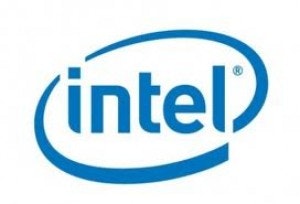Intel Corporation (NASDAQ:INTC) has long been a dominant force in the processor space, commanding tremendous market share to the detriment of competitors like Advanced Micro Devices, Inc. (NYSE:AMD). Now, after numerous rumors, the chip giant has made it clear it is looking to tackle an entirely different market: home entertainment.
In a move that seems unlikely, Intel has announced plans to launch an Internet TV service with an accompanying set-top box. The company intends to do this in a fashion similar to Netflix, Inc. (NASDAQ:NFLX), that is, without building its own infrastructure and instead relying on customer ISPs to carry programming. Before getting into the major hurdles of such a service, it’s worth discussing why the company would venture so far from its core competencies.

While PCs will not vanish any time soon, computing power is quickly becoming a commodity, forcing even the most dominant players in the market to change strategies. The obvious target is the mobile chip market, though it is dominated by ARM Holdings plc (ADR) (NASDAQ:ARMH) and its unique business structure. Intel has focused resources on the mobile market, but so far remains woefully behind. ARM has dominated the market for nearly 10 years at this point, commanding more than 90% of the market during the period.
Without a foothold in the smartphone market, Intel is looking for other markets, hence the decision to go for the living room. Intel isn’t the only major tech company to have designs on the home entertainment market with both Google Inc (NASDAQ:GOOG) and Apple Inc. (NASDAQ:AAPL) making overtures toward it. Apple CEO Tim Cook has frequently gone on record to point to Apple TV as an area of intense interest for the company.
Google has made several passes at the market, launching smart TVs and set-top boxes designed to extend its reach into the living room. The company was also rumored to be exploring a home audio system at one point, though nothing more has surfaced on that front. On the smart TV front Intel was an early provider of chips for Google’s designs, though it failed to gain much traction.
As it stands, with the exception of Microsoft Corporation (NASDAQ:MSFT), big tech has struggled in the living room. The software giant successfully transformed its Xbox game console into a full fledged media hub, placing it squarely ahead of its competitors. It seems these failures have inspired the chip giant to take a different route. Rather than pouring resources into a standalone device, they’re looking to combine it with a killer service customers will clamor for. In theory it sounds like a great idea, but there are some major hurdles to overcome.
The first glaring issue is licensing. No streaming service can succeed without content, and even with pockets as deep as Intel’s, acquiring enough of it will not be easy. The company has made its general plans clear, but conspicuously made no mention of what content it expects to have at launch. Content is quickly becoming a point of contention for incumbents like Netflix. Fending off the likes of Amazon.com, Inc. (NASDAQ:AMZN) is already straining content; adding another firm to the mix will do nothing but push the price of content higher. In addition to higher prices, Netflix and others have been vying for exclusive content deals, reducing potential content available to Intel’s fledgling service. Intel may be able to circumvent content issues by adopting bundling similar to cable, but that would weaken the service in the eyes of those looking to cut the cord.
Two other major issues are technological constraints and consumer product expertise. Intel has a tremendous track record with chip fabrication, but its consumer facing products have been few and far between. It remains to be seen whether Intel can pull off a major design coup where Apple and Google have not. Compounding that issue is the fact that Intel’s service will be forced to rely on the bandwidth of other companies. Even if Intel manages to put together a killer service, it has to rely on other companies to deliver the most important part, the content. Netflix has had to deal with the same issue, but Intel’s platform is more ambitious and likely to suffer more under infrastructure constraints.
In the end, even if Intel manages to successfully navigate the issues and build a viable service, it seems unlikely it will become a major profit center. Intel may be able to leverage success into a wider consumer footprint, but it may find its effort and resources better spent on mobile.
The article Intel Moving Into Your Living Room: Bad Decision? originally appeared on Fool.com and is written by Chris Moore.
Copyright © 1995 – 2013 The Motley Fool, LLC. All rights reserved. The Motley Fool has a disclosure policy.





